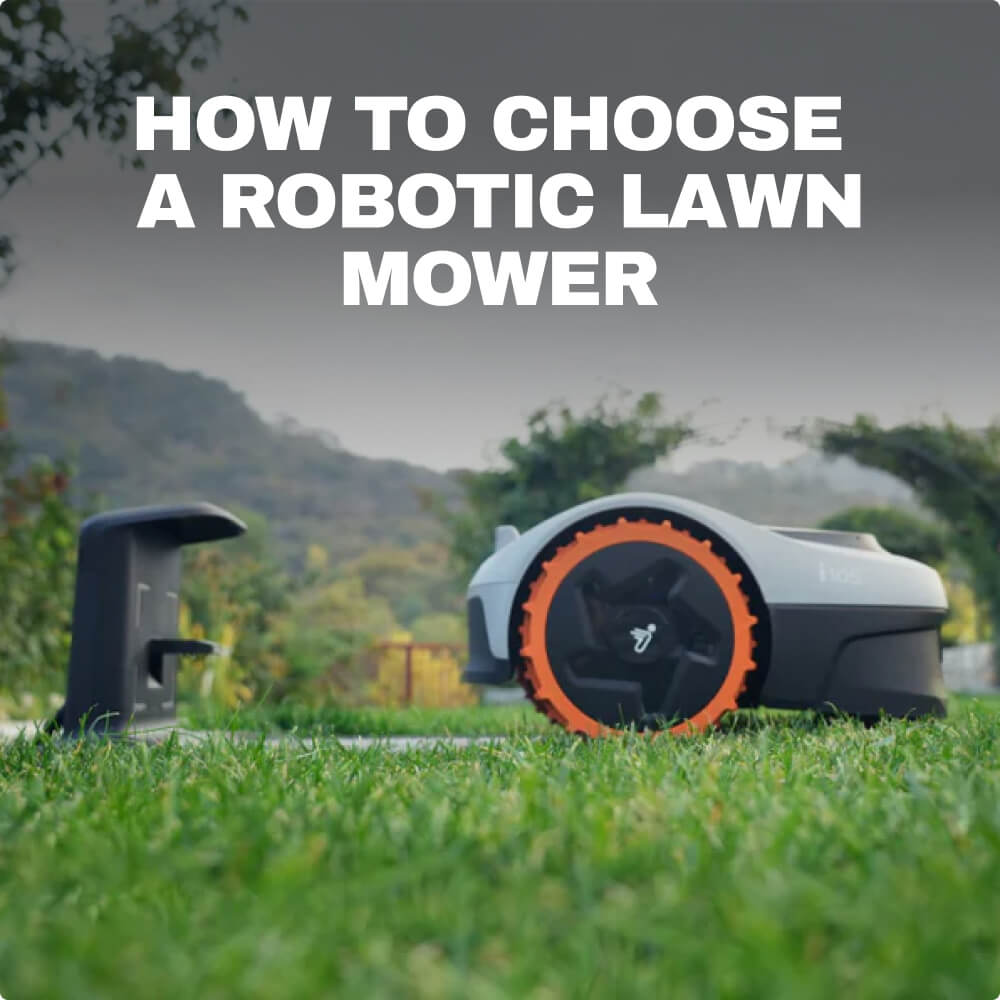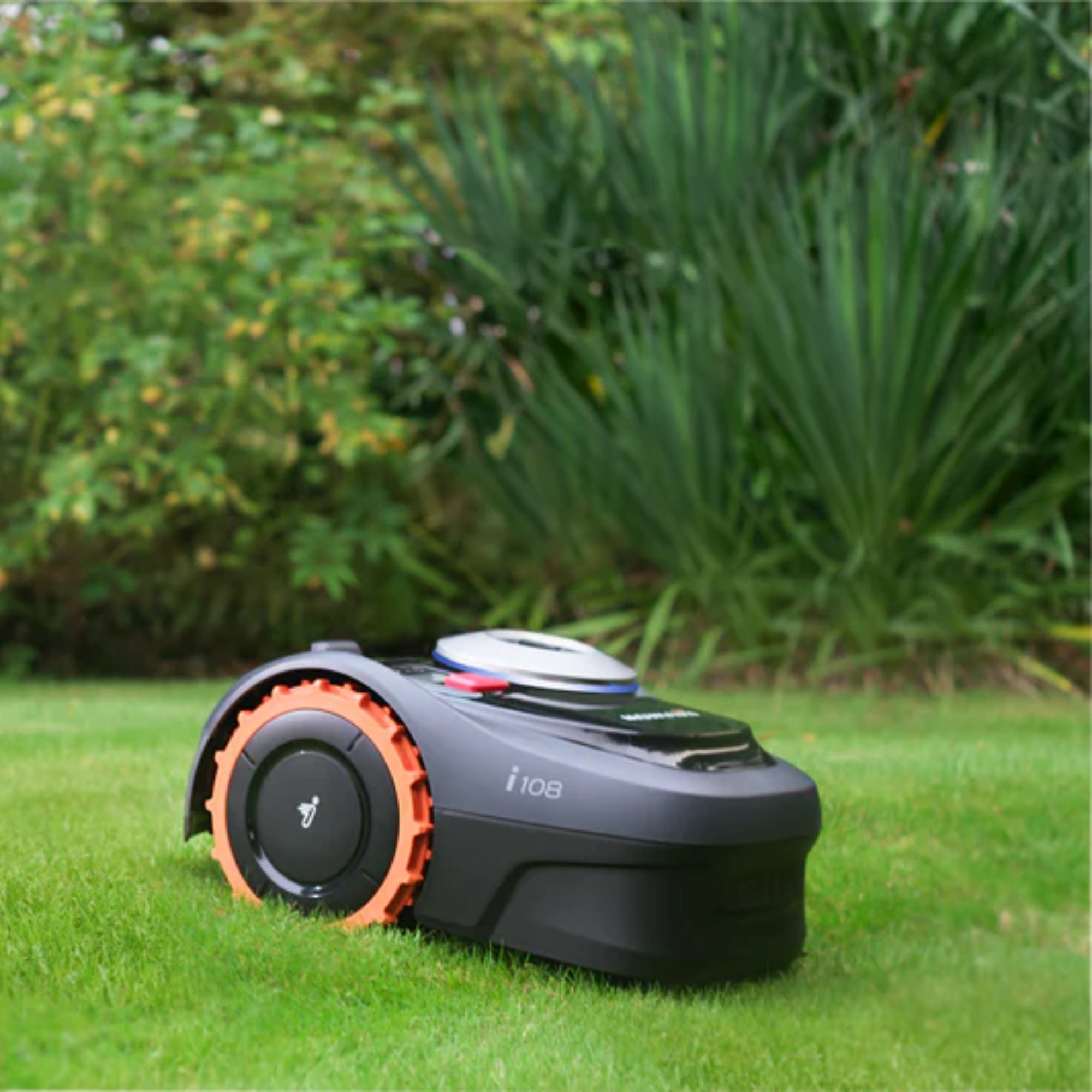FAQ
How Does a Robotic Mower Work?
How do robotic lawn mowers work?
Robotic lawn mowers operate autonomously by using virtual or physical boundary wires to define the mowing area and sensors to navigate around obstacles. They cut the grass into tiny clippings that fertilize the lawn naturally.
How does the robotic mower know where to mow?
A wire-free robotic mower uses advanced GPS technology and sensors to map and navigate your lawn, ensuring it mows within the designated area accurately. This system allows it to avoid obstacles and efficiently cover the entire lawn without the need for boundary wires. Wired robotic lawn mowers use physical boundary wires installed around the perimeter of the lawn and around obstacles to define the mowing area.
How much does a robotic lawn mower cost?
The cost of robotic mowers varies widely depending on features and capabilities. Models for smaller gardens may start around $1,500, while high-end models with advanced features will exceed $10,000.
Are robot mowers safe around families and pets?
Robotic mowers are designed with safety in mind, featuring advanced safety mechanisms such as sensors to detect and avoid obstacles, lift and tilt sensors that stop the blades immediately, and boundary wires to keep them within designated areas. Their quiet operation and safe blade design further enhance safety.
Are robotic mowers environmentally friendly?
Yes, robotic mowers are electric and produce no direct emissions. They also cut grass into small clippings that act as natural fertilizer, reducing the need for chemical fertilizers.
Are robotic mowers noisy?
In general, a typical petrol lawn mower produces around 90 decibels of sound. The average robotic mower produces around 60 decibels of sound – making it 33% quieter than petrol and about the level of an average conversation. Although we reckon our robot lawn mowers would be more like a whispered conversation.
What does it mean when we talk about robot mowers with boundary wires?
A physical boundary wire is installed around the edge of your lawn and around any obstacles that the robotic mower should avoid. This wire can be customized to ensure the mower only cuts the intended areas and avoids the rest.
Pros: Performance is not affected by buildings or trees, and performs well in various lighting conditions.
Cons: The installation process is more time-consuming and there's a risk of wire breaks.
What is a wire-free robotic mower?
A wire-free robot lawn mower uses GPS or other advanced technologies to define the mowing area without physical boundary wires. The robotic mower relies on satellite signals or digital maps to navigate.
Pros: Easier to install and adjust without physical wires. No risk of wire breaks or maintenance issues.
Cons: Performance can be affected by GPS signal quality and interference. Historically, wire-free mowers were more expensive, but with the advances in technology this is no longer the case.
What is a wire-free + vision-enhanced boundary system?
A wire-free vision-enhanced boundary system combines wire-free navigation with advanced cameras or sensors to detect and map obstacles in real time. This system improves the mower's ability to navigate complex environments.
Pros: Provides real-time obstacle detection and mapping. Flexible installation without physical wires. Improved navigation and efficiency in varied environments.
Cons: Historically were more expensive due to the advanced technology, but this is no longer the case.
Can a robotic mower handle Kikuyu grass?
Yes, a robotic mower can handle tough grasses like kikuyu. We’ve found that Kikuyu responds beautifully to the regular cutting by robotic mowers and the lawns look amazing!
Can a robotic mower cut long grass?
Robotic Mowers are engineered to trim a little bit off the lawn regularly and will keep your lawn perfectly manicured all day every day. It can handle long-ish grass, but it's best to cut long grass initially before setting your new robotic lawn mower off for the first time.
How often should the robot mower cut the grass?
Robotic lawn mowers operate autonomously based on the schedule you program. The frequency of mowing depends on your lawn's size and the mower's capacity. You can schedule the mower to operate for up to 2 hours daily or continuously, 24/7, depending on your needs.
Can robotic mowers handle complex lawns?
Yes, robotic mowers can manage complex lawns with features like multiple zones, narrow passages, and slopes. They can navigate and mow efficiently in different lawn conditions.
Irregular Mowing vs. Systematic Mowing
Wired mowers typically use a random mowing algorithm, meaning they move in various directions to cover the area, resulting in a smooth, carpet-like appearance (though striping or pattern cutting isn’t possible). RTK/GNSS and some vision-based mowers can mow systematically, creating stripes or patterns. Systematic mowing is more efficient, often covering twice the area in the same time as random mowing. And they create cool patterns 😊
Can a robotic mower handle steep slopes?
Every garden is different, and we match the mower to the lawn. Smaller urban models can handle slopes of about 25% (14°). All wheel drive models can handle slopes up to 70% (35°).
How long does the battery last on a robotic mower?
Battery life varies by model, but most robotic mowers can operate for 60 to 90 minutes on a single charge. They will return to their charging station when the battery is low.
What happens if it rains while the robotic mower is working?
Many robotic mowers are equipped with rain sensors that return them to their charging station if it starts to rain. They will resume mowing once the weather improves.
Do robotic mowers require a lot of maintenance?
With fewer moving parts and no need for petrol or oil changes, maintenance is minimal and typically involves cleaning the mower and checking the blades regularly. Blades should be replaced every few months to maintain cutting efficiency.
Do robotic mowers need to be serviced?
An annual service is recommended to keep your mower in tip top shape. Husqvarna offers and extended 5yr warranty if you service your mower annually with a professional service centre like MowBot
What is the lifespan of a robotic mower?
With proper maintenance, a robotic mower can last up to 10 years. Regular servicing and replacing worn parts as needed can extend its lifespan.
Robot Mower Tech Terms Glossary
RTK, GNSS, EFLS, GPS, EPOS... what...?!?
We've put together a little list of terms to help you understand what they all mean.
What does GNSS mean?
GNSS stands for Global Navigation Satellite System. It's a generic term for satellite navigation systems that provide geolocation and time information to a receiver anywhere on or near the Earth's surface. The most well-known GNSS is the Global Positioning System (GPS), but there are other systems like GLONASS (Russia), Galileo (Europe), and BeiDou (China). These systems use a network of satellites to provide precise positioning and navigation information.
What is GPS?
GPS (Global Positioning System) is a satellite-based navigation system that provides location and time information anywhere on Earth. It uses a network of satellites to determine precise positions.
What is RTK?
RTK (Real-Time Kinematic) is a highly precise positioning technology used in advanced navigation systems, including robotic mowers. RTK enhances the accuracy of standard GNSS (Global Navigation Satellite System) signals by using correction data from a nearby base station or a network of stations.
What is EFLS?
EFLS (Exact Fusion Locating System) is a unique high-precision localization technology used by Navimow. It combines satellite positioning with data from multiple sensors, such as the vision camera, gyroscopes, accelerometers, magnetic compasses, and odometers, to enhance positioning accuracy and fault tolerance.
What are the benefits of EFLS 2.0?
EFLS 2.0 integrates camera sensor data to reduce errors caused by poor GPS signals. During mapping, the lawnmower uses its camera to capture key environmental features like houses and trees, improving navigation accuracy.
What is SLAM?
SLAM, or Simultaneous Localization and Mapping, is a technology used by robotic mowers to navigate and map your lawn. It allows the mower to create a real-time map of its environment while simultaneously tracking its own position on that map. This helps the mower efficiently plan its mowing route, avoid obstacles, and cover the entire lawn systematically, even in complex or changing environments.
What is LiDAR?
LiDAR, or Light Detection and Ranging, is a technology used in some robotic mowers to create a detailed map of your lawn. By emitting laser pulses and measuring their reflection off objects, LiDAR helps the mower accurately detect obstacles, navigate efficiently, and ensure precise coverage while avoiding collisions.
A LiDAR-based SLAM system uses a laser sensor to generate a 3D map of its environment.




